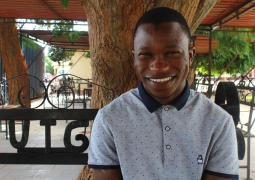
A simple definitionofMedical Negligence was espoused in the Ghanaian case of The State v Tsiba (1962) 2 GLR 109 at p.111, Akufo Addo J.S.C (as he then was): "the omission to take care where there is a duty to take care". There is a general perception that doctors know it all in the medical profession and defend their colleagues when they go wrong in allegations of medical negligence.
As students of the law: for legal academic education, weexamine the common law perspective,academic legal studies, the Evidence Act 1994, and court decisions in the Gambia to ascertain whether indeed the notion of doctors know it all exists in the modern times orthat assumption is a thing of the past in the health system.
Bolam (1957) Covering Doctors-History
The adage of doctors knowing it all in the healthcare industry was a shield under the Bolam principle. This principle, which saves the medical profession held that when a doctor engages in a negligent act and it goes to court, once a colleague doctor testifies that the doctor's practice or act is accepted by a reasonable body of medical opinion in that act the doctor could not be held as negligent.
The ‘Bolam’ principle has long been the traditional test governing how much information is necessary to avoid liability in negligence. Doctors would rely on their professional judgment to determine the amount of information to be disclosed.
Before that, Hunter v Hanley [1955] S.C. 2000 also permitted the medical profession to decide what information a patient could receive about options for treatment and the risks and benefits of those options. Information delivery to patients was filtered by the practice of the profession.
During this period, the courts in the UK were content to permit the medical profession through the evidence of expert witnesses on professional practice to dictate what information patients were entitled to receive.
The focus was not on the rights of the patient and the disclosure of risks inherent in a proposed treatment was seen as a product of the doctor’s duty of care rather than as a product of the patient’s right to self-determination.
Roger v Whitaker (1992): A patient’s right
There cameRoger v Whitaker, an Australian case, that was celebrated for departing from doctors know it all in Bolam and Sidaway. Roger's case reasoned that instead of cementing medical opinion, even on patients’ decision-making, the court is willing to re-examine the appropriateness of the standard adopted by doctors.
Bolitho(1997): Judges have the power to think for medical people
Bolitho v City and Hackney HA, 1996helped to clarify what was meant by “a responsible body,” defining it as one whose opinion had a “logical basis in the medical profession.”
This means that the Bolam Test and the Bolitho Test are used in combination in medical negligence. Bolitho test is saying that the doctor’s decision, though appears sound in the medical community has to be logical. Combining the two cases means that a doctor is not negligent if he or she acts in accordance with a responsible body of medical opinion, providedthat the Court finds such an opinion to be logical.
For instance, the Evidence Act 1994 of the Gambia, Section 75 permits expert opinion to be given in evidence before the court in matters relating to medical, science, pathologist’s report, and many others. There are instances where the court is confronted with a conflict in what is regarded as expert opinions.
For instance, in the case of BabourcarrTourayv MRC and 2 OR GCA CIV.APP. 55/94, where medical experts presented diverse explanations as to the cause of gangrene(death of body tissue due to a lack of blood flow or a serious bacterial infection) which led to the loss by the plaintiff's two hands. When this happens, the court is not bound to accept the opinion of an expert or anybody else. It is the duty of the court to describe what is logical, not the medical profession. The court has to examine all the issues that are before it.
Thus,Bolitho questioned the authenticity of expert knowledge given the Bolam test to the extent that opinion among expert groups may not be based on sound current knowledge.
In Pearce v. United Bristol Healthcare NHS Trust 1999, the Court of Appeal established that the standard adopted in Bolitho was equally applicable to cases dealing with the duty to inform.
Chester v Afshar (2004): Courts protecting doctors
In Chester v Afshar, Lord Hope said “the function of the law is to protect the patient’s right to choose. If it is to fulfill that function, it must ensure that the duty to inform is respected by the doctor.”Based on this statement, some commentators held that the courts have been lenient on doctors and have not been robust enough to hit the nail on the head to protect the rights of patients. Probably, those affected by alleged medical negligence in the Gambia are not testing the law.
Foo Fio Na v Dr. Soo Fook Mun, 2007: AMillennial Approach
In this Malaysia case, FooFio Na v Soo Fook Mun and Anor. (2007), the Court viewed the Bolam’s as being “over protective and deferential” to the medical profession. The judges reasoned that the law is indeed in their bosom, and they can disagree with medical opinion. The court determines the reasoning behind doctors’ conduct and not the profession. The Federal Court opined that “the Rogers v Whitaker test would be a more appropriate and viable test of this millennium.
Sidaway&Montgomery: doctors are not superior
Even before the development in Montgomery in the modern era, in 1985 the House of Lords in Sidaway v Board of Governors of the Bethlem Royal Hospitaladopted the test to be employed in case a doctor fails to advise a patient of the risks involved in a particular treatment.
Sidaway became the first test for information disclosure to patients that recognized their right to self-determination in the context of decisions about their medical treatment. The case was recognized in Montgomery.
The ‘Montgomery case has called on doctors to consider ‘material risk or significant risk’ and the doctor has a duty to provide all useful information or all possible options.Hence, failure on the part of the doctor to provide the patient with other possible options available is suicidal on the part of the doctor.
‘Reasonable patient’ rather than ‘Reasonable doctor’.
In Montgomery v Lanarkshire Health Board, UKSC 1, 2015, has raised the standard of a reasonable test as the focus is now on ‘reasonable patient’ rather than ‘reasonable doctor’. The law defines material risk as either a risk to which a reasonable person in the patient's position would be likely to attach significance or a risk that a doctor knows or should reasonably know is perceived to be of significance by this particular patient.
The issue of concern is ‘this particular patient. Bismarket al. (2012) explained that many jurisdictions have moved towards legal standards for risk disclosure, prioritizing the preferences of patients. The Ghana Health Service Patient’s Charter thusgives a patient the power to make decisions as well.
This was the case in ‘Cantebury v Spencer’ in 1972 in the District of Columbia Court of Appeal, the court rejected the traditional approach of ‘what reasonable practitioner would do’ to a patient-centered standard: ‘what would a reasonable person want to know?’
Montgomery applicability in Ghana
‘Montgomery’, ‘Pearce’ and ‘Roger v Whitaker’ concerning a doctor's duty to take reasonable care to ensure patients are aware of any material risks involved in recommended treatment and the alternatives were applied in Dr. E.L.A. Chinbuah and Attorney General case, 2021, when the deceased was due to deliver, she opted for a Cesarean Section, but her request was turned down. Instead, the doctors decided to take her through normal delivery. This caused her to bleed profusely and died in the process. The Ghanaian court adopted a more patient-centered approach here.
Are Doctors in Danger?
Some commentators believe the new law appears to be harsh on doctors as the courts have decided to tell doctors how to practice medicine instead of doctors making changes in their profession. But others also believe that the new law will help doctors to sit up instead of believing that they are superior and know it all in the medical profession. But the ‘unlettered’ man on the street of Banjulwill think that the new law is the way to go judging from recent allegations of medical negligence.
The law even went further to state that when a doctor knows there is another doctor who is more experienced to take a certain case and failed to do so could be held negligent. This was manifested in an Australian case, ‘Chappel v Hart’ [1998], the attending doctor failed to disclose the availability of a more experienced surgeon for a particular procedure, the factual causation must be followed by a second aspect of causation, the scope of liability that the patient would only claim if the risk materializes, as in ‘Wallace v Kam’[2013] HCA 19.
Other commentators assert that Wallace could pose a great challenge as some patients could demand highly expensive treatment, disregarding the cost-effectiveness issue or opting for alternative medicine without strong scientific evidence. For instance, Strauss and Thomas (2009) held that in modern health care, responsible bodies of medical opinion mean judicious use of the best current evidence in making decisions about the care of patients, and also a strong emphasis on patient-centered care.This would bridge the gap between the two different standards (professional vs reasonable person) and also the legal and medical perspectives regarding disclosure and consent.
Conclusion
As students of law with an interest in medico-legal issues, our studies established that the mantra of doctors know it all is a thing of the past. Regarding medical negligence, the courts have demonstrated that judges have the power to think for the medical profession.
We believe that it is prudent for doctors and healthcare workers to understand that the healthcare team is about collaboration in this new era, and patients are becoming more proactive about their health. Many are seeking legal opinions on health issues and negligent actscan affect the image of the doctor and the facility.
We recommend that the healthcare industry should start looking at how to avert negligence in their practices. However, as law students, it is encouraging to know that “doctors know it all” is no longer an option as the court has the power to disregard this.
The authors are BL Candidates at the Gambia Law School, Banjul, Gambia. E-mail: professor40naturopathy@gmail.com.julianatwumwaa@aol.com





